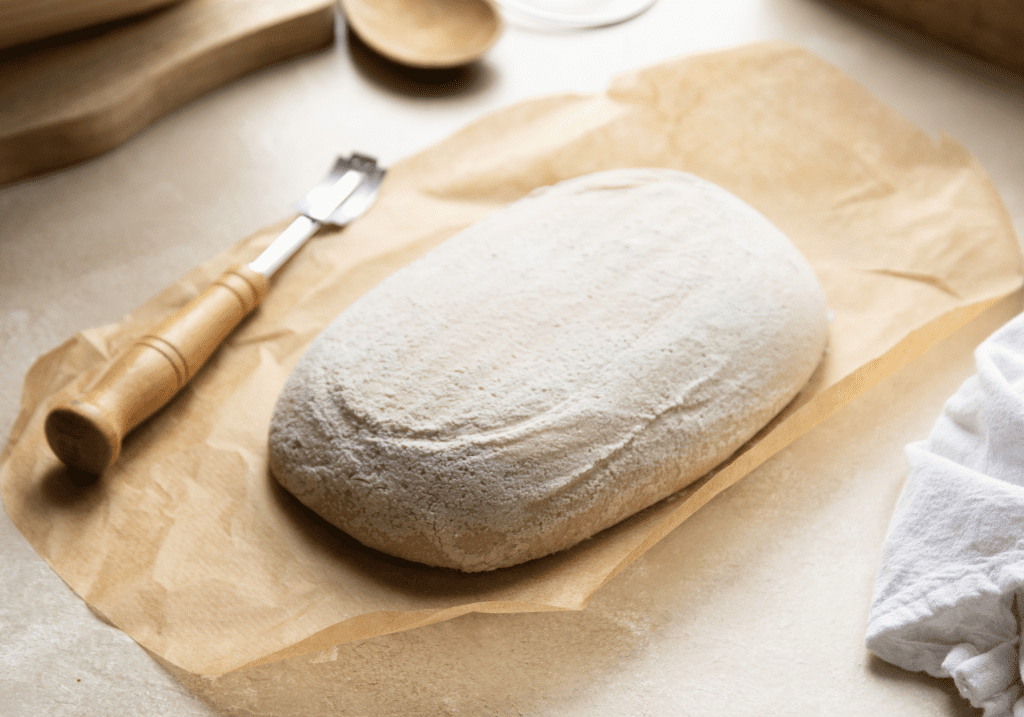Sourdough bread is one of the oldest and most traditional types of bread, dating back thousands of years. The unique flavor and texture of sourdough bread come from the fermentation of wild yeast and bacteria, which are naturally present in the air and flour. But the art of sourdough bread baking goes beyond simply mixing flour and water. One of the most important steps in the process is scoring the dough before baking.
Scoring is the process of making shallow cuts on the surface of the dough just before it goes into the oven. The purpose of scoring is to allow the dough to expand and rise in a controlled manner, creating a beautiful, crusty loaf with an open crumb and a distinctive flavor. But scoring also has a significant impact on the overall quality of the bread, particularly in the case of sourdough bread.
When sourdough bread is scored, the surface tension of the dough is released, allowing the bread to expand and form a crust. This expansion also creates what is known as “oven spring,” where the dough rises rapidly in the oven due to the release of gases. Proper scoring can lead to a beautiful crust, with the desired texture, color, and thickness.
But scoring isn’t just about aesthetics. It also plays a crucial role in the overall quality of the bread. When a sourdough loaf is scored correctly, the crumb structure is more open, with larger air pockets, which results in a lighter, airier bread. This is because scoring allows the gases produced during fermentation to escape from the dough, which leads to a more even distribution of air pockets in the bread.
Scoring also affects the rate at which moisture escapes from the bread during baking. If a loaf is not scored properly, the crust may be too thick and dense, which can trap moisture inside the bread and lead to a gummy texture. Conversely, if a loaf is scored too deeply or too early, the moisture may escape too quickly, leading to a dry, tough crust.
To master the art of scoring sourdough bread, bakers must consider several key factors. The first is the angle and depth of the cuts. The cuts should be made at a slight angle, rather than straight down, and should be deep enough to release surface tension, but not so deep as to cause the bread to collapse. The second factor is the timing of the scoring. Sourdough bread should be scored just before it goes into the oven, allowing the gases to build up and expand during the first few minutes of baking.
But there’s more to scoring than just the basics. The shape and pattern of the cuts can also affect the quality of the bread. Different patterns can lead to different results, with some patterns producing a more open crumb structure and others producing a denser, chewier texture. For example, a single slash down the center of the loaf will produce a more rounded, artisanal look, while multiple slashes in a diagonal pattern will produce a more elongated, baguette-like shape.
Bakers can also experiment with the depth and placement of the cuts to create different effects. For example, deeper cuts will produce a more open crumb and a thinner crust, while shallower cuts will produce a denser crumb and a thicker crust. The placement of the cuts can also affect the way the bread rises and expands, with cuts made closer to the center of the loaf producing a more even rise and cuts made closer to the edges producing a more dramatic, rustic look.
In conclusion, scoring is a vital aspect of the sourdough bread baking process that requires skill, practice, and attention to detail. Proper scoring can lead to a beautiful, flavorful loaf with a light, airy crumb and a crispy, golden crust.





















